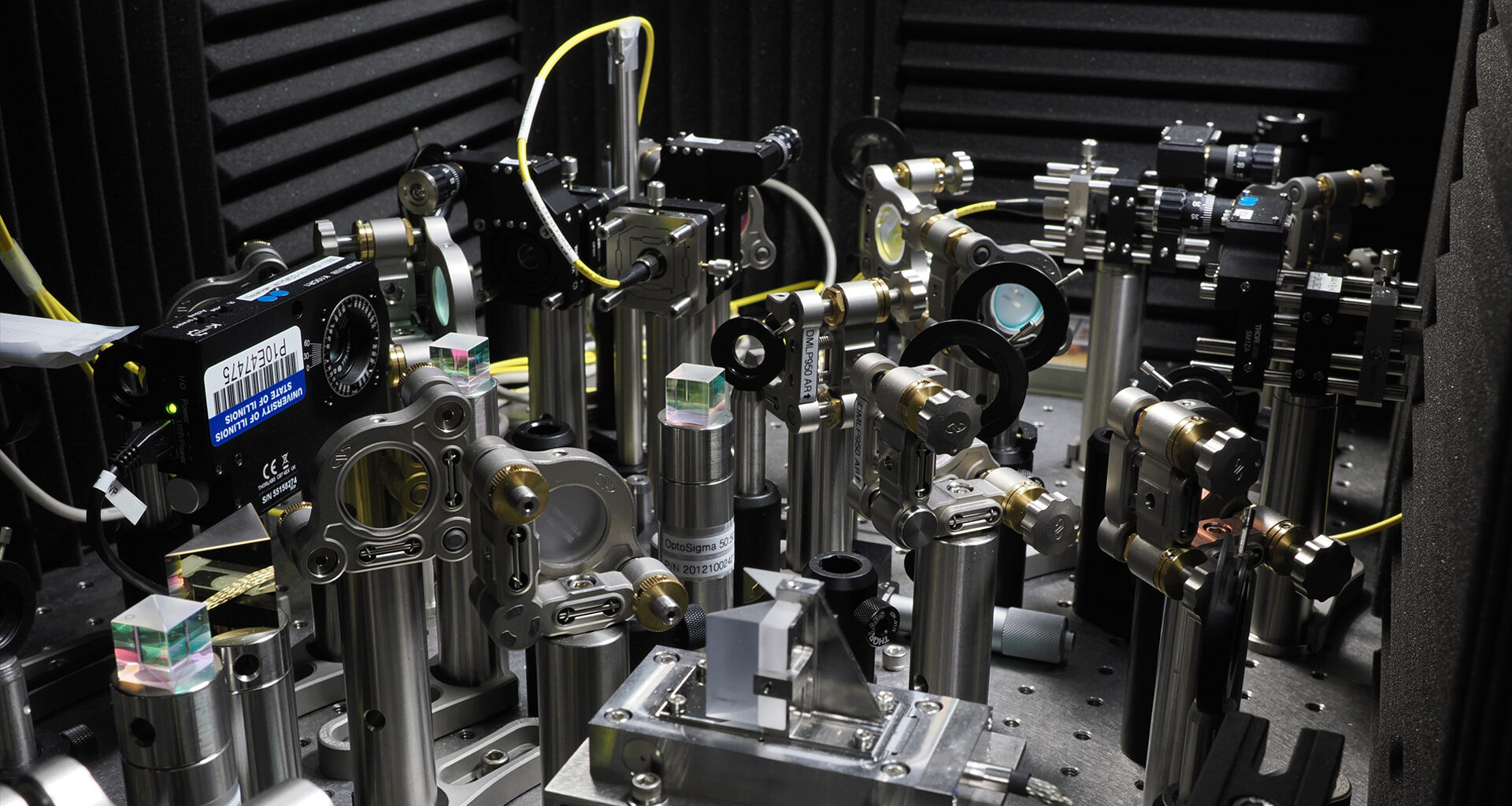Imagine trying to measure something so tiny, faint, or fragile that even our best scientific tools can’t handle it, like checking the width of a human hair from far away, or looking inside soft tissues without touching them.
Scientists have been facing this problem for years because conventional tools often fail when light is too faint, samples are too sensitive, or background noise is overwhelming.
However, now, physicists at the University of Illinois Urbana-Champaign (UIUC) have built a new kind of measuring device, one that uses quantum principles to see nearly invisible things with incredible accuracy.
They have created a quantum interferometer that can make quick and accurate measurements at the nanometer scale, even in noisy or difficult conditions. This breakthrough could change how we study everything from living cells to the tiniest pieces of advanced materials.
“Compared to other quantum interferometers, our system measures faster and with higher precision, and so now we have the opportunity to study time-varying signals, such as nanometer-scale vibrations,” Colin Lualdi, lead researcher and a graduate student at UIUC, said.
Limitations of conventional interferometers
In order to understand what makes the new quantum interferometer so powerful, you need to first know what interference is and how conventional interferometers work.
Imagine dropping two stones into a still pond. Their ripples meet sometimes, adding up to form bigger waves (constructive interference), and sometimes cancelling each other out (destructive interference). Light waves behave the same way.
Conventional interferometers shine light through two paths, one through a sample and one as a reference. When the two light beams meet again, the way they interfere (either canceling each other out or adding up) reveals tiny changes in distance or material thickness.
This method is of great importance as it has helped us detect gravitational waves and examine the human retina to diagnose diseases, but it struggles in tricky situations. If a sample doesn’t let light pass through easily, or if there’s a lot of stray light in the environment, the interference pattern becomes hard to read.
Worse, some sensitive samples, like metallic films or living tissue, can’t tolerate bright light. That’s where the new interferometer can make a difference. Instead of using regular light waves, it utilizes pairs of photons (particles of light) that are entangled.
The power of two-photon interferometry
Out of the two entangled photons, one travels through the sample and the other takes the reference path, their reunion creates an interference pattern. Even if the sample blocks light or the environment is bright, the entangled photons still produce a strong, clear signal, as long as both are detected at the same time.
“As long as you detect two photons as a part of the interference measurement, the contrast of your interference signature will remain perfectly fine, which is a huge quantum advantage,” Lualdi said.
To improve their interferometry further, the researchers used something called extreme color entanglement. That means the two photons in a pair have very different colors, like red and blue, instead of just slightly different reds. The bigger the color difference, the more sensitive the measurement.
However, this doesn’t mean they used a whole rainbow of light (which is hard to work with). They found a way to entangle just two narrow colors very effectively. “With entanglement, we only need to work with a little bit of blue and a little bit of red, instead of the whole span of colors between them,” Lualdi added.
The result was impressive. The quantum interferometer could measure tiny distances or surface features even on hard-to-see, light-sensitive materials in just seconds. In one test, they measured the thickness of a metallic film and then confirmed the result with atomic force microscopy, a top-tier lab method. The two measurements matched perfectly.
This new tool could be a game-changer across many areas of science and technology. For instance, in medicine, it might allow doctors to image delicate tissues without damaging them.
In biology, it could help researchers study light-sensitive creatures like algae, without needing bright lights that alter their behavior. Moreover, it could help engineers monitor materials in harsh outdoor conditions or track tiny vibrations in mechanical parts.
However, the current version requires a complex setup with many tiny components carefully arranged and connected to one another. Hopefully, further research will enable researchers to simplify the design of their interferometer so that it can be easily used in real-world settings.
The study is published in the journal Science Advances.
